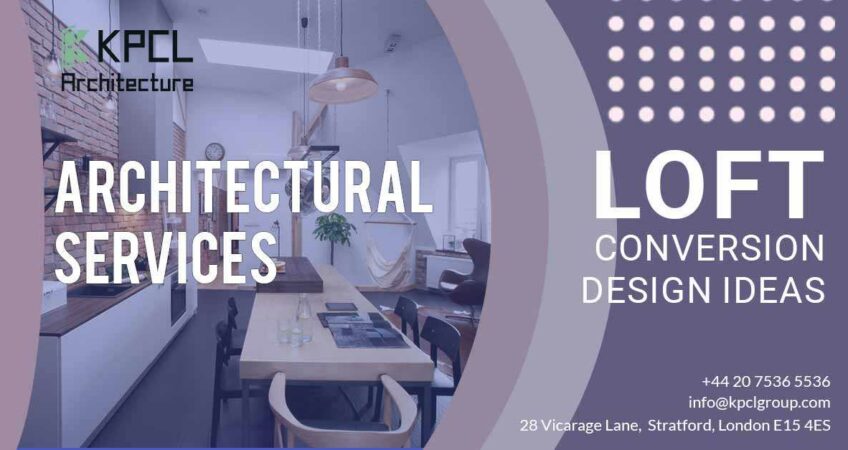
Contents
# Loft Conversion Design
If you’re looking for some loft conversion tips and ideas. To make an organized, neatly designed extra space. It’s crucial to not only get your layout right. Even your budget, the loft room design, loft staircase design, the position of the windows before you start any work on the loft conversion. Read along to get useful loft conversion design ideas.
# Types of Loft Conversion:
You might be wondering what types of loft conversion exists. In general, there are six main kinds of Loft conversion given below:
1. Roof-Light Loft Conversions:
has the least amount of structural work to the existing space. And are thus the most cost-effective. The only changes that are made are the windows added.
2. Dormer Loft Conversions:
They are the most popular choice since dormer roof design ideas are the simplest way to add light. And an increased amount of roof space with the largest headroom. The dormer roof design on the sides or rear of the house is modified to add a wide, flat-roofed dormer.
3. Hip-To-Gable Loft Conversions:
Most found on either end-terrace or semi-detached houses side. The hipped side roof is removed and straight up to form a new vertical gable is then constructed up the end wall.
4. Gable-To-Gable Loft Conversions:
consists of an extension resembling a box. That stretches between each gable end. You can also consider increasing the height of the gable ends to act as a support.
5. Mansard Loft Conversions:
produces extra volume. The process involves replacing either one or both slopes of the roof. With very steep sloping sides and a flat top roof.
6. Modular Extension Loft Conversions:
applied when the current space is not ideal for a loft conversion. Measures are taken and the new rooms get developed off-site before they get delivered as a module. It then removes the existing roof and installs the new module.
# Small Loft Conversion Design Ideas:
If you are browsing ideas for the small loft conversion. Like a small children’s bedroom, a home office. Even a children’s TV room or teen crash pad, first work out if your small loft is even big enough to convert. Lofts that have 2.3m of minimum head height are often seen as suitable to convert.
This decision may also get affected by obstacles such as chimneys or water tanks, as well as the roof pitch. Do not throw away your hopes of conversion if the roof space is less than 2.3 m, as there are other options available. Replacing or replacing parts of a roof. This allows the necessary headspace to be gained. This adds to the cost, but, it requires permission to plan, as opposed to a simpler conversion.
1. Select Design Ideas That Adapt To Its Proportions:
If your loft conversion is on the smaller side. Or you opt for a few small rooms as opposed to a large one. Take advantage of the natural cost atmosphere offered by the smaller rooms.
Although choosing a light-colored scheme like white. It has the power to make a room feel bigger and brighter, it needs to balance out so it doesn’t sound too clinical.
2. At The Design Phase, Plan the Furniture’s Layout:
The design of your completed loft conversion. Needs consideration long before you start working. This involves determining where furniture pieces. The bathroom and any built-in space will be located.
3. Get The Best From Space Professionally:
In the case of design, there are two vital options-
The first is commissioning a designer such as an artist or designer of architecture. Produce drawings that can be issued on a competitive tender basis to builders. To build exactly what you want, you will be able to steer the designer. Yet charges can be high as a proportion of overall costs for what is a relatively small venture. And you will also need to hire a structural engineer.
The other choice is to turn over the entire project to a design-and-build company. Who will have in their team an architect, engineer, and constructors? We may be less innovative when it comes to design. But an advantage is the all-inclusive cost.
4. In Your Loft Conversion Maximise The Daylight:
Taking time to consider your windows ‘ size. And the position is an important aspect of a loft conversion design. As a matter of fact, if you want to maximize natural light. Glazing should make up 20% of the roof area.
The roof shape will often determine the placement of the windows. Such as a long, shallow room will benefit from windows that are equally spaced along its length. While a small, deeper room will benefit from one large window.
# Conclusion:
With these loft conversion plans examples. And creative Loft Conversion Tips And Ideas. You can easily get started with your choosing the right Loft conversion procedure.
See Also:
Essential Guide To Loft Conversions



